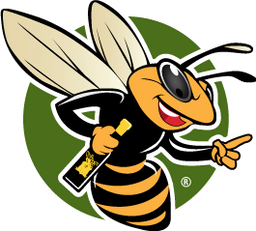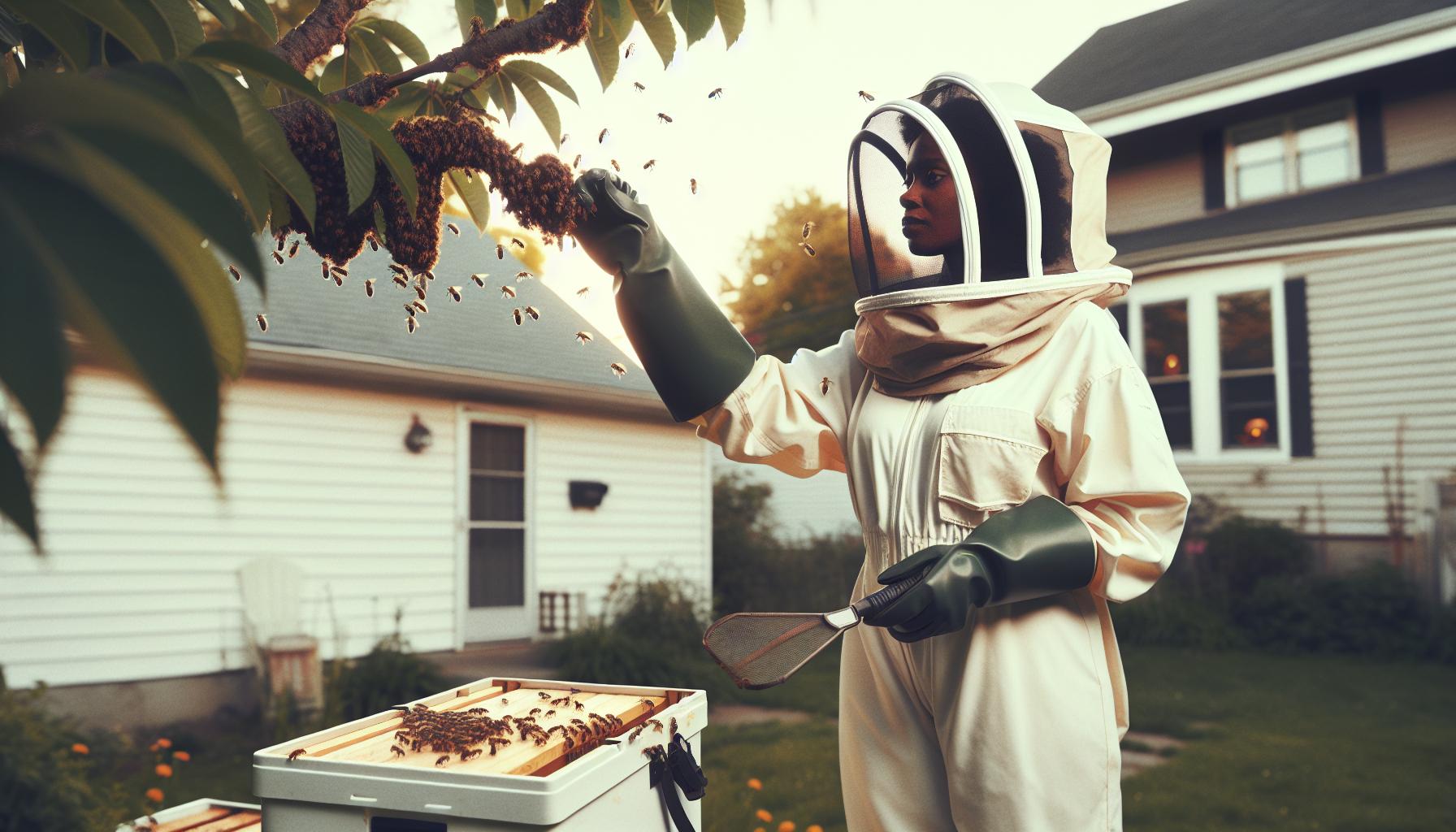Encountering a swarm of bees can be an unsettling experience. While these buzzing insects play a vital role in our ecosystem, their sudden appearance in residential or commercial spaces can create safety concerns for people and pets. Knowing how to handle this situation with care and precision is crucial for ensuring safety and preserving these indispensable pollinators.
This guide explores the essentials of bee swarm behavior, why bees are important, and effective removal techniques—ranging from do-it-yourself methods to professional services. By understanding these practices, you can address swarming situations confidently and responsibly.
What Is a Bee Swarm?
A bee swarm occurs when a colony becomes overcrowded, prompting the queen bee and a group of worker bees to leave the original hive and seek a new home. This natural process is primarily seen during the spring and early summer when bee colonies experience rapid population growth.
When swarming, bees temporarily gather in a visible cluster, often on tree branches, fences, or building overhangs. While swarming bees are generally not aggressive since they lack a hive to defend, their presence can still be intimidating. Recognizing the behaviors and triggers behind swarming is key to responding appropriately.
The Importance of Bees in the Ecosystem
Bees are vital to the health of our environment and the global food supply. They are responsible for pollinating approximately 75% of the world’s crops, including fruits, vegetables, nuts, and seeds. Beyond agriculture, their work supports biodiversity by enabling the reproduction of flowering plants, which serve as habitats and food sources for various wildlife species.
Protecting bees during swarm removal ensures the continuation of these essential services. By approaching the situation with care, you contribute to the health of ecosystems and the sustainability of food production systems.
Why Do Bees Swarm?
Understanding the reasons behind bee swarming can help you predict and address this natural phenomenon effectively.
Natural Reproductive Behavior
Swarming is a colony’s way of reproducing. When the hive becomes too crowded, the queen bee lays eggs that will develop into new queens. Once a new queen is ready to take over, the current queen departs with a group of worker bees to establish a new colony. This ensures the species’ survival and allows the original colony to thrive under the leadership of the new queen.
Environmental Triggers
Environmental factors also influence swarming behavior. Abundant food resources, favorable weather, or rapid hive population growth can prompt swarming. Conversely, stressors like disease, parasites, or poor hive conditions may force bees to relocate in search of a healthier environment.
Methods for Safe and Effective Bee Swarm Removal
Handling a bee swarm requires a balance of safety precautions and humane practices. Here are two primary approaches:
DIY Removal Techniques
If you’re comfortable handling bees and the swarm is in an accessible area, these do-it-yourself methods may be effective:
-
Smoke Application: A bee smoker produces calming smoke that masks the alarm pheromones bees release when threatened. This can make them less agitated and easier to manage.
-
Bee Traps: Setting up traps with empty hive boxes or containers laced with bee pheromone attractants can encourage the swarm to settle in a designated area.
-
Remove Attractants: Eliminate potential food sources, such as exposed garbage, sugary substances, or overripe fruit, to discourage swarming bees from staying nearby.
-
Seal Entry Points: Inspect your property for gaps or openings that bees might use to establish a nest. Seal these areas to prevent long-term habitation.
Note:
Before attempting DIY removal, ensure you are familiar with local regulations. In some areas, permits may be required for handling bees, and improper removal could result in fines or harm to the bees.
Professional Bee Removal Services
For most situations, hiring a professional bee removal service is the safest and most effective option. Here’s why:
-
Expert Assessment: Professionals can assess the swarm’s size, species, and location, tailoring their approach to the specific circumstances.
-
Humane Relocation: Many professional services prioritize the preservation of bees by safely capturing and relocating them to designated apiaries or wild habitats.
-
Specialized Equipment: Professionals use protective gear and tools designed to handle swarms efficiently, reducing risks to both people and bees.
-
Post-Removal Strategies: Technicians often provide advice on how to deter future swarming, including habitat modifications and preventive measures.
Hiring professionals ensures peace of mind, minimizes risks, and contributes to the conservation of bees
Safety Precautions During Bee Swarm Removal
Regardless of the method used, safety should always be a top priority. Here are some essential precautions:
Wear Protective Gear
Proper protective equipment minimizes the risk of bee stings:
-
Bee Suit: A full-body bee suit with elastic cuffs and a hood offers comprehensive protection.
-
Gloves: Thick gloves protect your hands and wrists.
-
Veil: A bee veil shields your face and neck from stings.
-
Closed-Toe Shoes: Sturdy footwear ensures your feet are protected and stable during the removal process.
Be Prepared for Allergic Reactions
Bee stings can cause allergic reactions in some individuals. Follow these guidelines to stay prepared:
-
Know Your Allergies: If you’re allergic to bee stings, avoid attempting removal and consult professionals instead.
-
Emergency Plan: Keep an epinephrine auto-injector or antihistamines on hand in case of severe reactions.
-
Monitor Symptoms: Signs of an allergic reaction include swelling, difficulty breathing, or a rapid heartbeat. Seek immediate medical attention if these symptoms occur.
Timing Matters: When to Address a Bee Swarm
Timing plays a crucial role in safe and effective swarm removal. The ideal time to address a swarm is during daylight hours when temperatures are warm, and bees are active. Bees are typically calmer during this time, making them easier to handle. Avoid attempting removal at night, as bees are more defensive and less predictable in the dark.
Conclusion
Encountering a swarm of bees doesn’t have to be overwhelming. By understanding their behavior and the reasons behind swarming, you can take informed steps to manage the situation safely and effectively. Whether opting for DIY techniques or professional assistance, prioritizing humane removal is essential for the well-being of both humans and bees.
By respecting the role bees play in our environment and taking proactive measures, you not only address immediate concerns but also contribute to the broader goal of ecological balance. Protecting these incredible pollinators ensures their continued contributions to agriculture, biodiversity, and the health of our planet.
Frequently Asked Questions (FAQs)
1. What causes bees to swarm?
Bees swarm primarily due to natural reproductive behavior. Overcrowded colonies prompt the queen and a group of worker bees to leave in search of a new home. Environmental factors, such as abundant food sources or poor hive conditions, can also trigger swarming.
2. Are swarming bees dangerous?
Swarming bees are generally not aggressive because they lack a hive to defend. However, they can become defensive if provoked. It’s best to maintain a safe distance and avoid disturbing the swarm.
3. Can I remove a bee swarm on my own?
DIY removal is possible if the swarm is accessible and you have the proper knowledge and protective gear. However, hiring professionals is recommended for safe and humane removal, especially in challenging situations.
4. How can I prevent future bee swarms?
To prevent future swarms, seal entry points in your home, eliminate potential food sources, and maintain a bee-friendly garden with flowers that encourage bees to stay in designated areas rather than your property.
5. Why are bees important to protect during removal?
Bees are essential pollinators, supporting global food production and biodiversity. Protecting them during removal ensures the preservation of ecosystems and the continuation of their vital role in agriculture and wildlife habitats.



